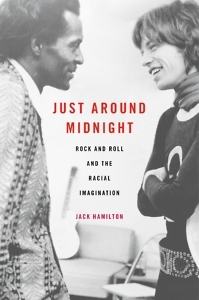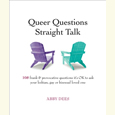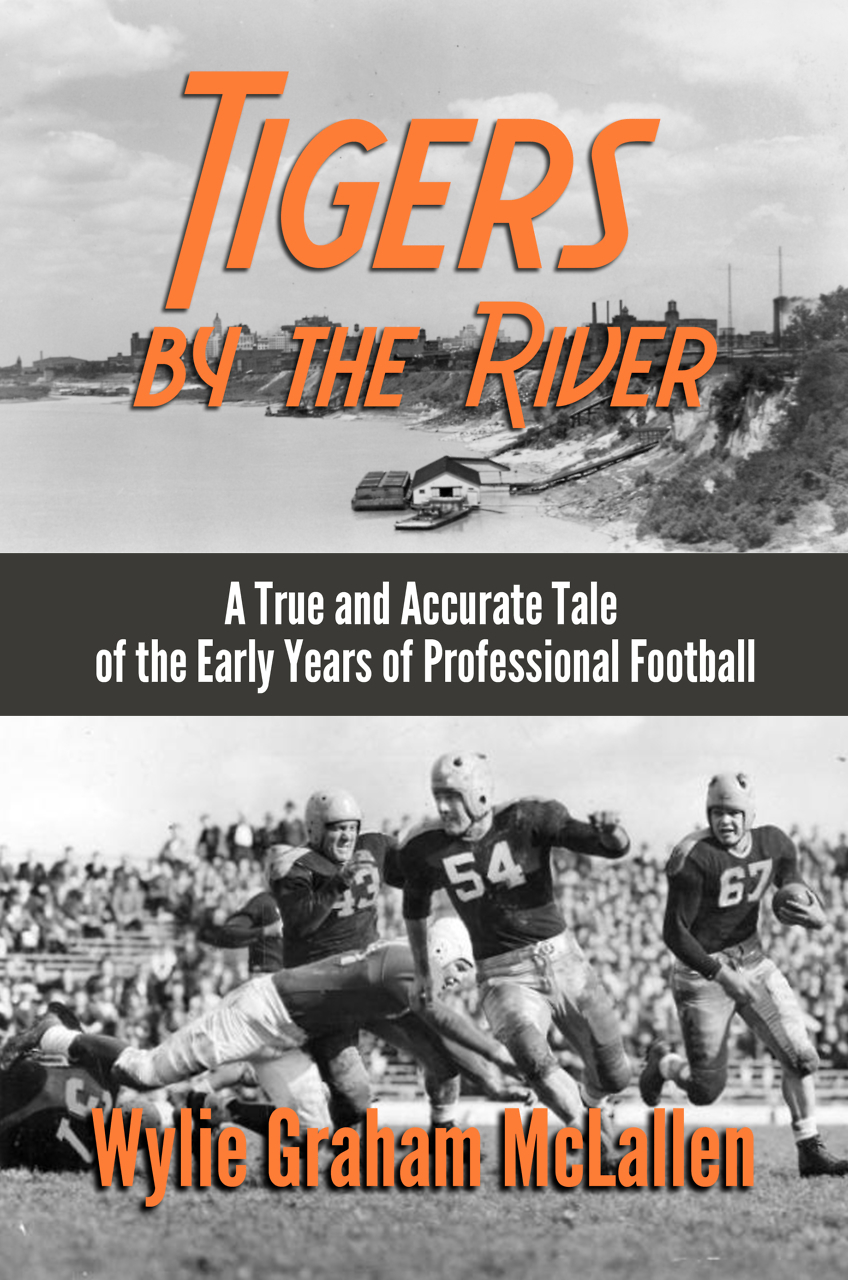How Rock-n-Roll Became White
Jack Hamilton explores the way race distorted the iconic music of the 1960s
In the late 1950s, no one would have questioned whether Chuck Berry, Little Richard, or Bo Diddley were stars of the genre known as rock-n-roll. But by 1970, it seemed strange that another black man, Jimi Hendrix, was considered a rock guitarist. In Just Around Midnight, Jack Hamilton asks how this shift happened. When he pairs Sam Cooke with Bob Dylan, the Beatles with Motown, or Aretha Franklin with Janis Joplin, he reveals the intricate musical connections that crossed lines of race, even as the music industry and the wider culture separated them into the distinct genres of “rock” and “soul.”

Jack Hamilton is an assistant professor of American Studies and Media Studies at the University of Virginia. He is also the pop critic for Slate magazine, where he writes about music, sports, film, TV, books, and other areas of culture. His writing has appeared in The Atlantic, NPR, ESPN, and The Los Angeles Review of Books. He answered questions about Just Around Midnight via email.
Chapter 16: On top of your scholarly pursuits, you have worked as both a musician and a music critic. How have those jobs shaped your approach to Just Around Midnight?
Jack Hamilton: Both those experiences have shaped the book pretty immensely. My identity as a musician has always made me think of music as a lived activity first and foremost—before it’s something that people listen to, it’s something that people do. So for me those stories, about what’s going on at the level of creativity and collaboration and interaction, are often some of the most interesting aspects of musical history. And my experience as a music critic gave me a lot of insight into just how difficult writing about music can be, and just how powerful it can be when done well. The best music critics enhance our listening but also instruct it, if that makes sense, which is a very significant thing. The rise of rock criticism during the period that I write about is an important component to the story I’m trying to tell.
Chapter 16: Everyone knows Sam Cooke’s “A Change is Gonna Come” and Bob Dylan’s “Blowin’ in the Wind,” but you suggest that these songs (and the artists) should be understood in relation to each other. Why?
Hamilton: Well, Sam Cooke was directly inspired by “Blowin’ in the Wind” when writing “A Change Is Gonna Come.” In 1963, the year he started writing “A Change Is Gonna Come,” he was obsessed with Dylan’s composition, and would sometimes remark to friends how amazed he was by “a white boy writing a song like that.” There’s even a really great recording of Sam Cooke performing “Blowin’ in the Wind” live at the Copacabana in 1964, taking Dylan’s folkie protest song to the nightclub stage. So there’s a really fascinating interracial (and, I’d say, inter-genre) connection between those two works, one that becomes even richer when considering that “Blowin’ in the Wind” actually borrows its melody from a nineteenth-century anti-slavery song. There’s just an incredibly rich amount of history running through both “Blowin’ in the Wind” and “A Change Is Gonna Come,” which are obviously two of the most famous songs of the 1960s, and two of the most famous songs about civil rights ever written.
Chapter 16: In a book full of famous people, perhaps the most compelling is a relative unknown: the bassist James Jamerson. How might his career help us rethink the role of both Motown and the Beatles?
Hamilton: James Jamerson is one of the most influential and important musicians of the 1960s, full stop. He was the session bass player at Motown and played at virtually everything recorded by Berry Gordy’s label in Detroit in the 1960s. He was a true virtuoso, a musician who expanded the possibilities of his instrument in the same way that Jimi Hendrix did for his. Jamerson’s influence over pretty much every other bass player in the 1960s (and since) was just absolutely massive, but it’s particularly pronounced in Paul McCartney’s playing, particularly in the mid-to-late-1960s. If you trace this legacy—which doesn’t get discussed all that much, since as a session musician, Jamerson was rather unknown during his day, and even today still flies fairly under-the-radar—you can hear how much Motown’s music continued to matter to the Beatles during a period when the Fab Four were being heard as increasingly avant-garde, and moving away from “R&B” and “Pop” into the new genre of “rock.”
 Chapter 16: At the risk of oversimplification, it seems like over the course of the 1960s, the genre of rock-n-roll splits along two tracks: “rock” and “soul.” How? What are the implications of this split?
Chapter 16: At the risk of oversimplification, it seems like over the course of the 1960s, the genre of rock-n-roll splits along two tracks: “rock” and “soul.” How? What are the implications of this split?
Hamilton: What my book argues is that this genre split is as much a racial sorting mechanism as it was a musical one. By the mid-to-late 1960s, music that had once been known across the board as rock-n- roll was now being split into these two categories, (white) “rock” on one hand and (black) “soul” on the other. Now, there were obviously real differences between these two forms, but there were also plenty of similarities and, particularly at the beginning stages of the division, an absolutely enormous amount of overlap. One of the things my book is trying to uncover is that very overlap, and to show the ways that this division happened less at the level of music and musicians than at the level of the things other people were saying about and, to some degree, imposing onto the way people were listening to the music.
Chapter 16: Just Around Midnight takes its title from the lyrics to “Brown Sugar,” a Rolling Stones song that swims in images of lust, slavery, and violence. How did the Rolling Stones help construct the “racial imagination” of rock-n-roll?
Hamilton: The Rolling Stones are incredibly important to my book—in a lot of ways they really embody and exemplify a lot of the tensions and complications in question. Here was a white British band that was absolutely obsessed with black American blues and R&B, and went out of their way to extol their devotion to that music at every possible turn. They were real evangelists for older music and musicians whose music wouldn’t have likely otherwise been known to the Stones’ young fans on either side of the Atlantic—musicians like Jimmy Reed, Howlin’ Wolf, Little Walter—and they were also real fans and devotees of contemporary black pop music as well. By the late 1960s that made them somewhat unusual in the white “rock” scene, which was becoming increasingly racially insular. And yet at the same time, the Rolling Stones really did benefit from their own whiteness, and the fact of their race made it really easy for rock fans and audiences to slide them into this new genre rather than hearing the connections they were making to musicians who weren’t really being allowed into “rock.”
Chapter 16: What were the similarities and differences between writing this book and writing your columns for Slate? Did the experiences feed each other, or did they work at cross-purposes?
Hamilton: I certainly tried to write the book in an engaging and readable manner. It’s an academic book, but since the subject matter is something a lot of people are passionate about and might actually want to read about, I tried to make the tone clear, inviting, and hopefully even entertaining. And as I said before, I think the tools I’ve picked up and the insights and experiences I’ve gained over the years as a critic and journalist are really important to how this book turned out, so the experiences absolutely fed each other. At this point it’s almost impossible for me to imagine one without the other, and I really hope that people who enjoy my work in Slate will read and enjoy this book, and vice versa.

Aram Goudsouzian chairs the history department at the University of Memphis. His most recent book is Down to the Crossroads: Civil Rights, Black Power, and the Meredith March Against Fear.





